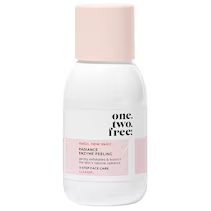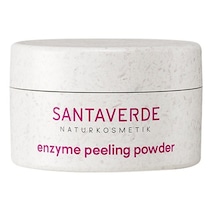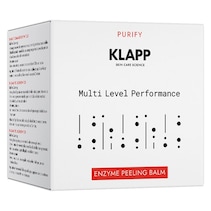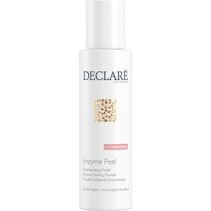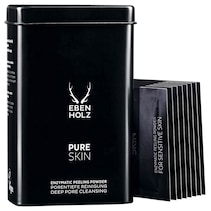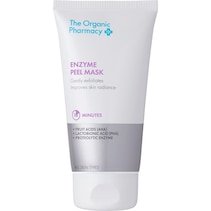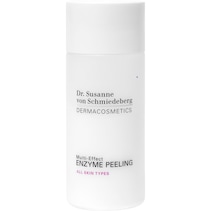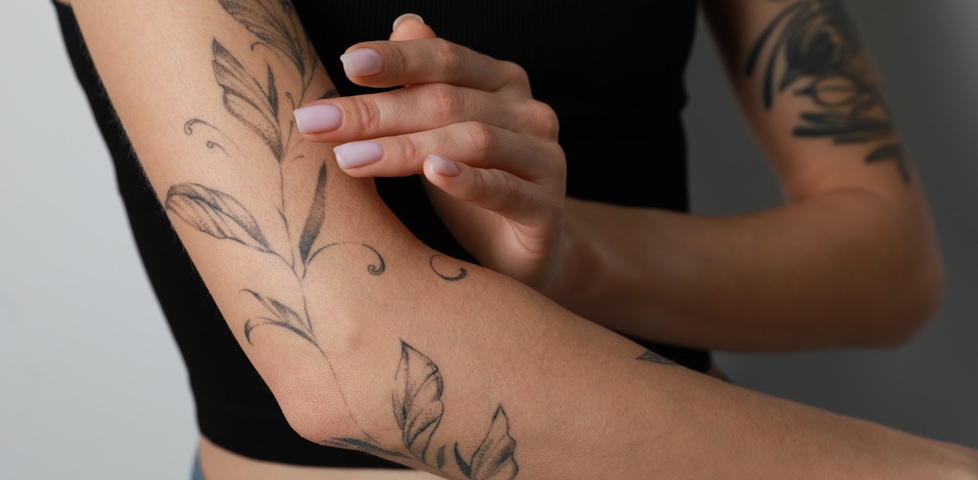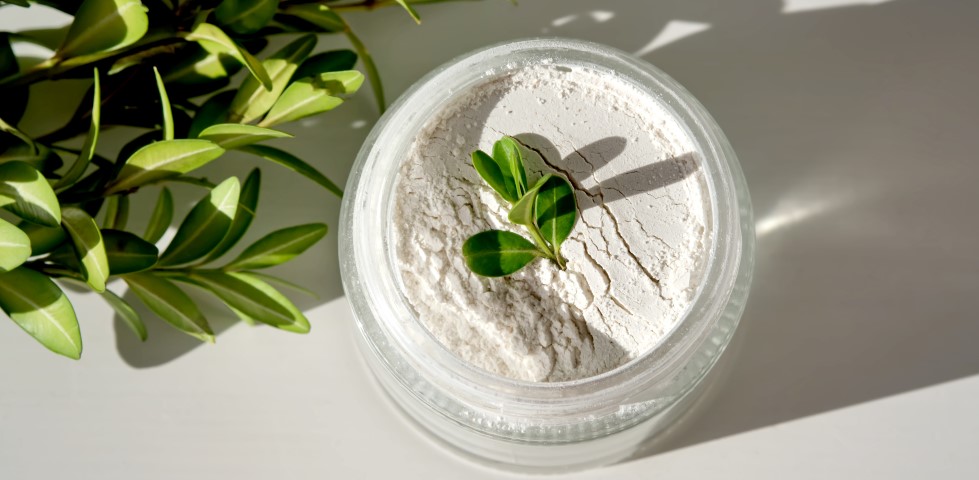
Enzyme peels – gentle exfoliation for visibly radiant skin
Enzyme peels are the gentle alternative to physical peels – this is how you remove dead skin flakes without irritation and refine your skin texture. Find out the best way to use them here.
12 January 2024 • 4 min. reading time
Table of contents
Enzyme peels
Enzyme peels
What is an enzyme peel?
Did you know that your skin renews itself around every 28 days? Skin flakes die off in the topmost layer and eventually replace themselves. But with increasing age, this process takes longer. Instead of falling off on their own, the flakes accumulate. This doesn’t sound too dramatic but over time the skin tone appears pale and tired – despite daily skincare. An enzyme peel accelerates the replacement of skin flakes using plant enzymes. These little helpers break off the connections of the flakes in the top layer of skin and remove them. This exfoliant effect can refine the skin texture and give you a fresh look.
Mechanical face peels work with exfoliating particles from sugar or salt crystals. Rubbing too aggressively or using exfoliants with sharp edges can stress your skin too much and cancel out the positive effect of a peel. AHA and BHA are pure acid peels that work intensively. Some people, however, cannot tolerate them. Enzyme peels, on the other hand, are super gentle, which can be a game changer for your sensitive skin.
Ingredients: How does an enzyme peel work?
Chemically speaking, an enzyme always has the suffix -ase. An enzyme works like a catalyst that initiates or supports reactions. In addition to its exfoliative effect, using an enzyme peel is also supposed to stimulate cell renewal. Collagen production can also be stimulated, which leads to an anti-ageing effect. In addition, the product penetrates deep into the pores. Sebum and dirt can be dissolved. In this way enzyme peels prevent skin impurities. The skincare substances that follow can better penetrate the deeper skin layers, which leads to a more effective skincare routine.
Do you wonder how you get a rosy complexion? It’s simple: the enzyme processes stimulate blood circulation at the same time. Your skin is supplied with more oxygen and glows from the inside out. The peel’s enzymes are predominantly of plant origin. You will find them on the INCI list under the following names:
- Ananas cosmosus (pineapple) fruit extract: bromelain from the pineapple plant – along with its ceralytic effect, bromelain can have a soothing effect
- Carica papaya fruit extract: papain from the papaya plant – can boost wound healing and repair skin damage.
- Cucurbita pepo extract: enzyme from the field pumpkin.
Please note: sometimes protease or subtilisin are also present in enzyme peels. These enzymes are produced by microorganisms and can be of animal origin. If vegan formulas matter to you, you should take a close look at the INCI list.
Application: integrating enzyme peels into your skincare
Enzyme peels are a perfect way to enhance your existing skincare routine. Many beauty salons offer enzyme peels but you can also enjoy all the benefits of an enzyme peel at home.
For your skin to get the maximum benefit, pay attention to quality. High-quality enzyme peels come in powder form. A pea-sized amount, which you stir into a paste with water shortly before application, is usually sufficient. By doing this, you ensure that the enzymes retain their full efficacy – without having to put up with unnecessary preservatives. Now, you simply take the following steps:
- Free your skin of make-up and other residues with your usual products.
- Mix the enzyme powder with water. This works well if you wet your hands and then sprinkle the enzyme peel on one hand. Finally rub it between both hands and let the peel paste develop.
- Apply the enzyme peel and massage it in well. Leave out the eye area.
- Leave it to take effect in accordance with the instructions on the packet. Treat yourself to a few minutes of time out from your day-to-day with nice music and pleasant fragrances.
- Remove the enzyme peel with warm water. It’s particularly pleasant if you wet a flannel or small towel and remove the product from your face with it.
- Apply your usual moisturiser. You should not use any more skincare products with peel ingredients today.
Does your skin tingle a bit when applying the enzyme peel? This is perfectly normal and shows that the product is doing its job. However, if itching or burning occurs, this indicates an intolerance. Wash off the enzyme peel immediately with lukewarm water. In addition, always remember to use sunscreen as peels make the skin sensitive to the sun.
Important:
always take care to ensure the enzyme peel in the packet never comes into contact with water. As soon as it is activated and has dried out again, it will have lost its effect. You should therefore always seal it well, keep it in a dry place and also ensure that no water can get into the packet when you take out the powder.
Benefits of enzyme peels for your skin
The regular use of an enzyme peel has numerous benefits. You will usually see the results of the enzyme peel after a single use. After rinsing it off, your skin can feel smoother, firmer and altogether healthier. Take care to moisturise your skin adequately afterwards and don’t put on any make-up. We therefore recommend that you use the enzyme peel in the evening.
- Anti-ageing with mature skin: Supports the renewal of your skin cells, can boost collagen production and make the complexion look younger.
- Helpful for impure or oily skin: Refreshes deep down in the pores, removes sebum and bacteria and leaves a clear skin texture. It can help to remove impurities in the long term.
- Gentle peels for sensitive skin: Often, an enzyme peel is the only keratolytic product that is well-tolerated by sensitive and stressed skin.
- Beauty booster for dry skin: The enzyme peel ensures that moisturising ingredients are especially well-absorbed.
Enzyme peels or fruit acid peels – what’s the difference?
What an enzyme peel does, you have already read above. But watch out: do not confuse it with a fruit acid peel. This product is also a chemical peel but has very different ingredients. As the name suggests, fruit acid peels contain a variety of acids like lactic acid, alpha-hydroxy acid (AHA) or glycolic acid.
Another difference is the texture. You mix enzyme peels with water just before use, while fruit acid peels usually come as a watery solution. This version is altogether significantly more intense, as the acids penetrate deeper into the skin. Admittedly, a treatment with fruit acids is not always well-tolerated. For this reason, a chemical enzyme peel can be a better alternative for sensitive skin. It is definitely worth a try.


